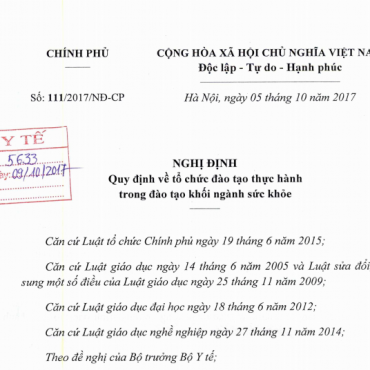Contact Admission
International Collaboration
Respiratory Support During the COVID-19 Pandemic Is It Time to Consider Using a Helmet?
Respiratory Support During the COVID-19 PandemicIs It Time to Consider Using a Helmet?
Laveena Munshi, MD1; Jesse B. Hall, MD2
JAMA. 2021;325(17):1723-1725. doi:10.1001/jama.2021.4975
Acute hypoxemic respiratory failure (AHRF) is the most common organ failure and cause of admission to the intensive care unit (ICU) among patients with COVID-19. As with all forms of AHRF, ICU management is supportive while treating the underlying cause. Because the traditional respiratory support of invasive ventilation, ie, intubation and coupling of the patient to the mechanical ventilator, carries high morbidity and mortality, less invasive respiratory support methods have been studied for decades. The overwhelming demands on ICU resources seen during waves of the SARS-CoV-2 pandemic have accelerated interest in the applicability of alternative respiratory support.
The most commonly used approaches include high-flow nasal oxygen (HFNO) and noninvasive ventilation (NIV). HFNO administers heated humidified oxygen through large bore nasal cannula, typically between 30 and 60 L/min.1 Following a trial among 310 patients that demonstrated a reduction in 90-day mortality with HFNO compared with other noninvasive oxygen therapies (but not helmet NIV), HFNO has gained traction in many ICUs.2 NIV couples the patient to the ventilator with either a face mask or helmet interface. Approximately 15% of patients with severe AHRF were treated with NIV in recent years, with an increase of up to 30% during the COVID-19 pandemic.3,4 Of concern, there has been a high failure rate with face mask interfaces, leading to the need for intubation and invasive mechanical ventilation (approximately 42%-47% across patients with moderate to severe acute respiratory distress syndrome), and a high mortality when intubation is required (approximately 45%).3 These outcomes may be attributable to injurious high tidal volumes generated with NIV, insufficient alveolar recruitment, or high work of breathing.2,5
Helmet NIV may have advantages over face masks, including a more effective seal, more effective delivery of positive end-expiratory pressure, greater tolerance, and less work of breathing.6 A small pre–COVID-19 randomized clinical trial compared the 2 NIV interfaces in 83 patients with AHRF and found that helmet NIV patients required intubation less often (18% for helmet NIV vs 62% for face masks) and had lower 90-day mortality (34% vs 56%).7 A recent network meta-analysis across 25 studies (3800 patients) compared all noninvasive modalities.8 This analysis found that helmet NIV, face mask NIV, and HFNO were associated with lower risk of intubation compared with standard oxygen therapy (helmet NIV: risk ratio [RR], 0.26 [95% credible interval {CrI}, 0.14-0.46]; face mask NIV: RR, 0.76 [95% CrI, 0.62-0.90]; HFNO: RR, 0.76 [95% CrI, 0.55-0.99]) and that both NIV modalities were associated with lower mortality (helmet NIV: RR, 0.40 [95% CrI, 0.24-0.63]; face mask NIV: RR, 0.83 [95% CrI, 0.68-0.99]). Importantly, none of these studies included patients with COVID-19 and there has not been a head-to-head comparison of helmet NIV vs HFNO.
In this issue of JAMA, Grieco and colleagues report the results of a multicenter randomized clinical trial comparing helmet NIV vs HFNO in patients with COVID-19.9 The intervention was the early application of 48 hours of helmet NIV or HFNO and the primary outcome was days free of respiratory support at 28 days. A total of 109 patients with moderate to severe hypoxemia (ratio of partial pressure of arterial oxygen to fraction of inspired oxygen ≤200) were recruited between October and December 2020. Clearly defined criteria for treatment failure (intubation) were used and a protocolized approach to weaning from each treatment was applied. There was no difference in days free of respiratory support at 28 days (20 days [interquartile range {IQR}, 0-25] for helmet NIV vs 18 days [IQR, 0-22] for HFNO; P = .26). Several clinically important secondary outcomes differed between the groups: a significantly lower incidence of intubation in the helmet NIV group (30% vs 51% for HFNO; P = .03) and a higher number of invasive mechanical ventilation–free days at 28 days in the helmet NIV group (28 days [IQR, 13-28] vs 25 days [IQR, 4-28]; P = .04).
This important trial is the first to directly compare helmet NIV vs HFNO in patients with a relatively homogeneous cause of AHRF. Strengths of the study include standardization of helmet NIV use, minimal crossover, and standardized determination of treatment failure and weaning of treatments. Although a difference in the primary end point was not seen, as noted by the authors, this likely relates to the study being underpowered because the resultant 28-day respiratory support–free days were much higher than anticipated from their original power calculation (11.6 days for HFNO, with an expected 25% increase for helmet NIV). While this primary outcome might not be viewed as highly patient-centered, it is important from the perspective of resource allocation during a pandemic and, hence, larger trials would be informative in this regard. In addition, the study demonstrated a substantial decrease in the proportion of patients intubated in the helmet NIV group. This finding is intriguing and requires further evaluation. A mechanism that may explain this observation is more effective alveolar recruitment with helmet NIV. If oxygenation and work of breathing improved (both criteria for intubation), less intubation would be expected.
Despite efforts to protocolize care, there were important differences in practice patterns between the 2 intervention groups. There was a higher incidence of prone positioning in the HFNO group (60% vs 0%) and higher sedative use in the helmet NIV group (37%) compared with the HFNO group (18%). The causes and effects of these co-treatment differences are difficult to assess. Also, in the subset of patients who failed either noninvasive support, those in the helmet NIV group had a higher 28-day mortality (50%; 8/16) compared with those in the HFNO group (36%; 10/28). This is likely attributable to a higher severity of illness in the helmet NIV failures. However, given the challenges in measuring tidal volumes accurately with helmet NIV, it is plausible that patients in the helmet group who experienced treatment failure were exposed to injurious high tidal volumes during assisted spontaneous breathing.2,5
How does this study translate into clinical practice? Specifically, is a reduction in intubation rate in a single trial sufficiently attractive to consider helmet NIV first in COVID-19 AHRF? Further, how does this study inform the uptake of knowledge from trials generally, especially in the maelstrom of a pandemic?
Two of the greatest challenges caused by the pace of evidence generation and adoption during the past year have been (1) tempering a desire to rapidly adopt new-emerging therapies, even with incomplete evidence, and (2) translating sequential trial results into clinical practice when standard care approaches are moving so rapidly. The early phase of the pandemic was met with an urgency to “do something,” which led to early and, in some cases, premature adoption of therapies with an insufficient evidence base (eg, hydroxychloroquine).10 The more recent part of the pandemic has seen accelerated output of important international collaborations. Some of the most rigorous and robust critical care trials ever conducted have been the end product of this pandemic.11,12 However, when the tempo of investigation is accelerated, standard care used in the control group can become quickly outdated given the research pace. This could lead to confusion about how a new therapy fits into the therapeutic algorithm for COVID-19 as data on multiple effective therapies are published. Many questions arise about how the results would have changed if they were combined with other effective therapies or compared head to head. However, this pace of research may not allow an abundance of time for evidence synthesis into the next trial design.
Has clinical research become limited by its own efficiency? While helmet NIV may have a physiologic benefit, it is not known whether the combination of noninvasive oxygen devices with maximal effective immune-modulatory therapy or prone positioning similarly affect outcomes in COVID-19. Even though impressive infrastructures have been built for evidence generation, an important remaining challenge is learning how to better assimilate the findings on the back end.
So, is it time to consider more widespread adoption of helmets in the ICU? There are important practical questions that remain. First, larger studies need to further evaluate whether these preliminary findings translate into important patient-centered outcomes such as mortality and longer-term functional outcomes. Second, helmet NIV needs to be evaluated comparing different helmet protocols (continuous positive airway pressure vs bilevel positive airway pressure), concomitant use of sedation, and quantification of tidal volumes. Third, threshold criteria for noninvasive oxygen modality failure (eg, ratio of oxygen saturation index for HFNO)13 may differ across each modality and need to be clearly defined to avoid “late rescue” intubation, which has been associated with increased mortality. Fourth, how each modality performs across different illness severities, stages of AHRF, or unique phenotypes needs to be better defined. Fifth, and arguably the most challenging, waiting for some degree of “steady state” of the evidence evolution to ensure that standard care will not be outdated by the time the trial is complete. Sixth, helmet programs are not created overnight; the learning curve may not be conducive to rapid adoption over a short period of time. Moreover, helmet NIV is not without risks, including carbon dioxide rebreathing, claustrophobia, and cycling dysynchrony.6 The investigators in this trial had years of experience in the use of helmet NIV and, hence, its generalizability to less experienced centers may be limited by a training need.
The study by Grieco et al9 in this issue of JAMA further supports the potential role of helmet NIV in the management of AHRF. While additional trials are needed, it is now clear that the use of HFNO is safe and effective in experienced hands, but it remains unclear about the ideal target population for helmet NIV. The ultimate answer may be that seeking a “generalizable” noninvasive solution to all patients with AHRF is the incorrect approach. There is likely not one strategy that is generalizable to all patient subtypes, across all severities of AHRF, and across all future phenotypes. The COVID-19 pandemic has effectively unveiled the heterogeneous nature of respiratory failure, even within one causative pathogen. While research has been accelerated substantially in the past year, this momentum must be sustained in defining the role of noninvasive oxygen strategies for treatment of AHRF in the future.
Article Information
Corresponding Author: Laveena Munshi, MD, MSc, Mount Sinai Hospital, 600 University Ave, 18-206, Toronto, ON M5G 1X5, Canada (Laveena.munshi@sinaihealth.ca).
Published Online: March 25, 2021. doi:10.1001/jama.2021.4975
Conflict of Interest Disclosures: None reported.
References
1.Goligher EC, Slutsky AS. Not just oxygen? mechanisms of benefit from high-flow nasal cannula in hypoxemic respiratory failure. Am J Respir Crit Care Med. 2017;195(9):1128-1131. doi:10.1164/rccm.201701-0006EDPubMedGoogle ScholarCrossref
2.Frat JP, Thille AW, Mercat A, et al; FLORALI Study Group; REVA Network. High-flow oxygen through nasal cannula in acute hypoxemic respiratory failure. N Engl J Med. 2015;372(23):2185-2196. doi:10.1056/NEJMoa1503326PubMedGoogle ScholarCrossref
3.Bellani G, Laffey JG, Pham T, et al; LUNG SAFE Investigators; ESICM Trials Group. Noninvasive ventilation of patients with acute respiratory distress syndrome: insights from the LUNG SAFE Study. Am J Respir Crit Care Med. 2017;195(1):67-77. doi:10.1164/rccm.201606-1306OCPubMedGoogle ScholarCrossref
4.Guan W-J, Ni Z-Y, Hu Y, et al; China Medical Treatment Expert Group for COVID-19. Clinical characteristics of coronavirus disease 2019 in China. N Engl J Med. 2020;382(18):1708-1720. doi:10.1056/NEJMoa2002032PubMedGoogle ScholarCrossref
5.Spinelli E, Mauri T, Beitler JR, Pesenti A, Brodie D. Respiratory drive in the acute respiratory distress syndrome: pathophysiology, monitoring, and therapeutic interventions. Intensive Care Med. 2020;46(4):606-618. doi:10.1007/s00134-020-05942-6PubMedGoogle ScholarCrossref
6.Amirfarzan H, Cereda M, Gaulton TG, et al. Use of helmet CPAP in COVID-19: a practical review. Pulmonology. Published online February 1, 2021. doi:10.1016/j.pulmoe.2021.01.008.PubMedGoogle Scholar
7.Patel BK, Wolfe KS, Pohlman AS, Hall JB, Kress JP. Effect of noninvasive ventilation delivered by helmet vs face mask on the rate of endotracheal intubation in patients with acute respiratory distress syndrome: a randomized clinical trial. JAMA. 2016;315(22):2435-2441. doi:10.1001/jama.2016.6338
ArticlePubMedGoogle ScholarCrossref
8.Ferreyro BL, Angriman F, Munshi L, et al. Association of noninvasive oxygenation strategies with all-cause mortality in adults with acute hypoxemic respiratory failure: a systematic review and meta-analysis. JAMA. 2020;324(1):57-67. doi:10.1001/jama.2020.9524
ArticlePubMedGoogle ScholarCrossref
9.Grieco DL, Menga LS, Cesarano M, et al. Effect of helmet noninvasive ventilation vs high-flow nasal oxygen on days free of respiratory support in patients with COVID-19 and moderate to severe hypoxemic respiratory failure: the HENIVOT randomized clinical trial. JAMA. Published March 25, 2021. doi:10.1001/jama.2021.4682
ArticleGoogle Scholar
10.Lamontagne F, Agoritsas T, Siemieniuk R, et al. A living WHO guideline on drugs to prevent COVID-19. BMJ. 2021;372(n526):n526. doi:10.1136/bmj.n526PubMedGoogle ScholarCrossref
11.Horby P, Lim WS, Emberson JR, et al; RECOVERY Collaborative Group. Dexamethasone in hospitalized patients with COVID-19. N Engl J Med. 2021;384(8):693-704. doi:10.1056/NEJMoa2021436PubMedGoogle ScholarCrossref
12.Gordon AC, Mouncey PR, Al-Beidh F, et al; REMAP-CAP Investigators. Interleukin-6 receptor antagonists in critically ill patients with COVID-19. N Engl J Med. Published online February 25, 2021. doi:10.1056/NEJMoa2100433PubMedGoogle Scholar
13.Roca O, Messika J, Caralt B, et al. Predicting success of high-flow nasal cannula in pneumonia patients with hypoxemic respiratory failure: the utility of the ROX index. J Crit Care. 2016;35:200-205. doi:10.1016/j.jcrc.2016.05.022PubMedGoogle ScholarCrossref
Source: https://jamanetwork.com/journals/jama/fullarticle/2778089?guestAccessKey=e3748629-775f-4f29-8879-57090ea49b0e&utm_source=silverchair&utm_campaign=jama_network&utm_content=covid_weekly_highlights&cmp=1&utm_medium=email
Other library
- One in 10 People Who Had Omicron Got Long COVID: Study ( 20:25 - 01/06/2023 )
- Physical Medicine Academy Issues Guidance on Long COVID Neurologic Symptoms ( 09:58 - 19/05/2023 )
- Breakthrough' Study: Diabetes Drug Helps Prevent Long COVID ( 08:55 - 15/03/2023 )
- BCG vaccine (thuốc chủng ngừa bệnh lao) & SARS-CoV 2 (covid-19) infection ( 10:08 - 27/10/2022 )
- Đại dịch COVID-19 đã kết thúc? ( 09:11 - 22/09/2022 )
- Dị hình giới tính ở COVID-19: Ý nghĩa tiềm năng về lâm sàng và sức khỏe cộng đồng ( 09:22 - 19/03/2022 )
- COVID-19 Update ( 21:00 - 06/03/2022 )
- Một người có thể tái mắc Covid-19 bao nhiêu lần ?? / kèm 6 tài liệu mới ... do "waning immunity", xảy ra ≥6 tháng sau chủng ngừa hay mắc nhiễm .. ( 20:25 - 06/03/2022 )
- T-cells from common colds can provide protection against COVID-19 - study ( 08:25 - 11/01/2022 )
- Coronavirus Can Spread to Heart, Brain Days After Infection ( 07:56 - 30/12/2021 )
















